Interview with Andrea Schewe, Pattern Designer
A few weeks ago I some how found myself at Andrea Schewe’s incredible blog. She’s a costume and craft pattern designer for Simplicity and on her blog she chronicles everything from her research to her design and sample making process to tutorials on how to create great costumes yourself.
If you peruse the costume or craft section of the Simplicity catalog you’ll find her little logo appearing all over the place. She’s made patterns ranging from fantasy hobbits to pirates to Elizabethan gowns to toddler animal Halloween costumes and more.
I was fascinated with the business side of designing for the big 4 and Andrea has such an informative an inspiring blog. Luckily she was kind enough to answer a few questions…
How did you get started working in pattern design?
I worked in the professional costume shops in New York for a number of years. Then in various other jobs in the fashion industry. I learned my sewing and patterning skills from my mother, who taught costume design and construction, then learned more at every job.
I wasn’t completely happy in the fashion world so when a job for soft toy maker was advertised I applied and got it. That job was fun. I made all kinds of rag dolls and plush animals. So, between professional costumes, fashion and cloth toys I acquired the skills to make the various things I now make for Simplicity.
When Simplicity approaches you to design a pattern what information do they give to help you create your pattern? Or does Simplicity just let you make whatever you want?
Simplicity sometimes gives me free reign when working on a new design. So, they will ask for something in a specific category, I will then send in reference photos to give them an idea of what I’m thinking about.
Next step would be to email in sketches. After they are approved, I will start work on the mock up samples continuing to check in for lots of reasons including approval of construction issues such as how many pattern pieces and specific sewing techniques. I, also, usually need to get fabrics approved. Other times they will send me photos of what they want. But even then I will let them know what I think will work or not.
We have a very good “give and take” working relationship. And I sometimes make patterns for other licensees, such as Disney and Amy Brown.
How long does it take to design a pattern? Do some styles take more time than others?
Most patterns take about 2 weeks of solid work for me, (then much more time after it is sent to Simplicity’s workroom) once the design is settled on, although some do take longer.
The tudor gown with all the correct underwear probably took me at least a month and a half. I do have a few people I hire to sew when I get really busy.
How many iterations of a design do you make before you settle on a final? How many samples will you create to send back to Simplicity?
On average, I have to sketch things about 3 times for each pattern. When finished, I send to Simplicity one sample of each style ready for photography, all the patterns and any sewing instructions I operations I think should be done a certain way. They have instructions for most things stored in their computer system, so it would be silly for me to spend the time to write complete instructions.
Does Simplicity request you to make a certain size to fit their models?
I must make my samples in for each size range of patterns in Simplicity’s sample size. Again, their computer system is set up to work best from these certain sizes. For Misses it is their 10 (32 1/2” bust, 25” waist, 34 1/2” hips), for Women’s sizes it is Simplicity’s 22 (44” bust, 37” waist, 46” hips), for babies size 6 months, Child size is a 4, Girls size is a 10 and Men’s is a 40” chest.
The children’s and Men’s sizes are the same as ready to wear and the same as they have been for decades, but the Misses and Women’s sizing have not kept up with the changes in modern ready to wear. People really need to measure themselves and the tissue pattern when sewing for the best fit. Don’t let the fact that you wear a size 8 in the store but need to cut a 16 when sewing bother you. How a garment fits is what is important.
From the time you submit your pattern to the company how long does it take to then appear in stores?
The turnaround time after my samples arrive at Simplicity is about 6 months. They have to check my samples, make all the sizes, write the instructions, draw the technical illustrations, photograph the models, make the guide sheet layout, make the layout for all the pattern pieces on the tissue, make the envelope layout and create the catalog. And then, of course get it all printed. I think they work amazingly fast.
You sometimes talk about restrictions like only being able to fit a limited number of instruction sheets and tissue paper in a pattern envelope. Or using supplies for your samples garments that come from big box stores so they are easy for users to find. What are some other technical challenges you face when designing patterns?
The biggest thing I have to worry about that is unique to someone making home sewing patterns is figuring out how to reuse the pattern pieces on two, three or more different styles in one pattern envelope. It makes you think in a different way. I also am mindful about how much all the materials I’m asking the customer to buy are going to cost and try not to require tons of expensive trims or too much fabric. People can always add the more expensive stuff on their own creation.
When you design costumes do you have a specific user in mind or do you try to design something that will appeal to a wide audience? How do the needs and wants of different sewists (like community theatre costumers, historical reenactors, cosplayers, or even novices making Halloween costumes) play into your patterns and instructions?
I and Simplicity try to make patterns for a wide variety of customers. We do create some patterns specifically for certain people, making some things easier, some historic, some sexy, etc. And if a certain pattern sells well, I’ll more make in the same category. So, the people who buy the most patterns will get more patterns made for them and one or two categories will predominate. Steampunk is really popular right now, for example.
I have a few of your historical patterns. What’s your research process like for these designs compared to the obvious fantasy styles?
Whenever I get to work on an historical garment, and please note I said GET TO – it is a big commitment for Simplicity to do a period correct piece, I first spend time looking at books with patterns from the period. Find out what kind of undergarments were worn and anything else I can.
Now, over the last 15 years Simplicity has really stretched itself trying to provide patterns for really accurate historic clothing. It takes so much more time every step along in the process. But even then it’s not possible to make the pattern 100% perfect. Within their format things have to be simplified. Plus, Simplicity wants it easy enough to sew for most people. There are a lot of compromises that have to be made.
Simplicity doesn’t have an opinion about historically accurate vs. modern interpretations. They go with what sells best. But, I think the people in the workroom prefer to work with modern sewing techniques, because that’s what they are used to and all their computer systems are set up for that.
On your blog you mentioned you were copying an extant dress for a museum in order to create a muslin used for fitting a display mannequin so that the original doesn’t get damaged. Are you often asked to do projects like that? And how do you go about carefully copying delicate garments?
I’ve only been asked to work on a museum project two times. It is really interesting work and I’d like to do more. To make the copy, the museum first sent me a photo of the dress, I then could learn about the period and research similar patterns before getting to actually handle and measure the gown. I then spent a day with the dress taking multiple photos and taking every measurement I could think of, So, with the pattern diagrams in my books and all my measurements and photos I was able to make a muslin sample for them to work with and paper pattern, just for the museum’s reference. This muslin will be used as the manikin is built to display this very fragile garment.
You once made a comment on how kids costumes that feature lots of pink in the envelope deigns tend to sell well. Why do you think that is? Does it have something to do with “Princess Culture”? Because of this does Simplicity request pink samples from you?
Yes to everything you said about pink. Some day this will change, but it has been so drilled into everyone’s head that pink is for girls, people don’t even realize this only started to happen after the 1950s. My 1960’s Barbie only had one pink thing, her night gown!
What’s the weirdest pattern you’ve ever had to make? The family size, lime green, fleece footie pajamas come to mind. (Even though they were color corrected on the envelopes they look pretty funny in their original color)
Years ago, over 20 to be exact, it was poplar to cover your vacuum cleaner with a stuffed animal with a big full skirt. I made a pattern that had a cow and a duck. I wonder what we are making now that will seem funny 20 years from now?
I really hope you check out her blog – so much information. Here’s just a sampling of some of my fave posts of hers:
- Creating Frozen costumes from a basic costume pattern
- The history of corsets
- Working with faux fur (for some awesome men’s fantasy costumes)
- How ikat fabric is made in Southeast Asia
- 100 years of Girl Scout uniforms
- Making a ren-faire costume using only pieces bought from a thrift store
She also does a lot of fun clothing projects for herself and nearly every pattern she’s developed in the past couple years have detailed tutorials to follow. It’s like Wikipedia for creative sewing – you’ll end up with 20 tabs open in your browser and four hours later you’ll wonder where all the time went!
Do you own any of Andrea’s patterns? Have you ever sewn a Halloween or threatrical costume? Feeling inspired to make one now?

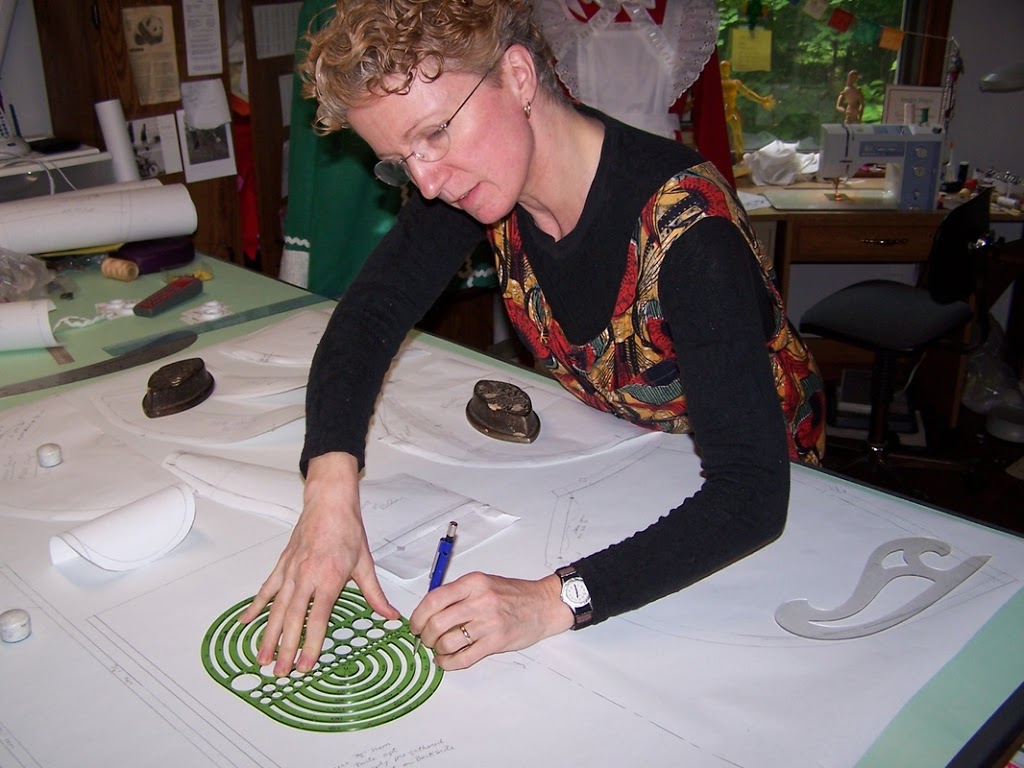
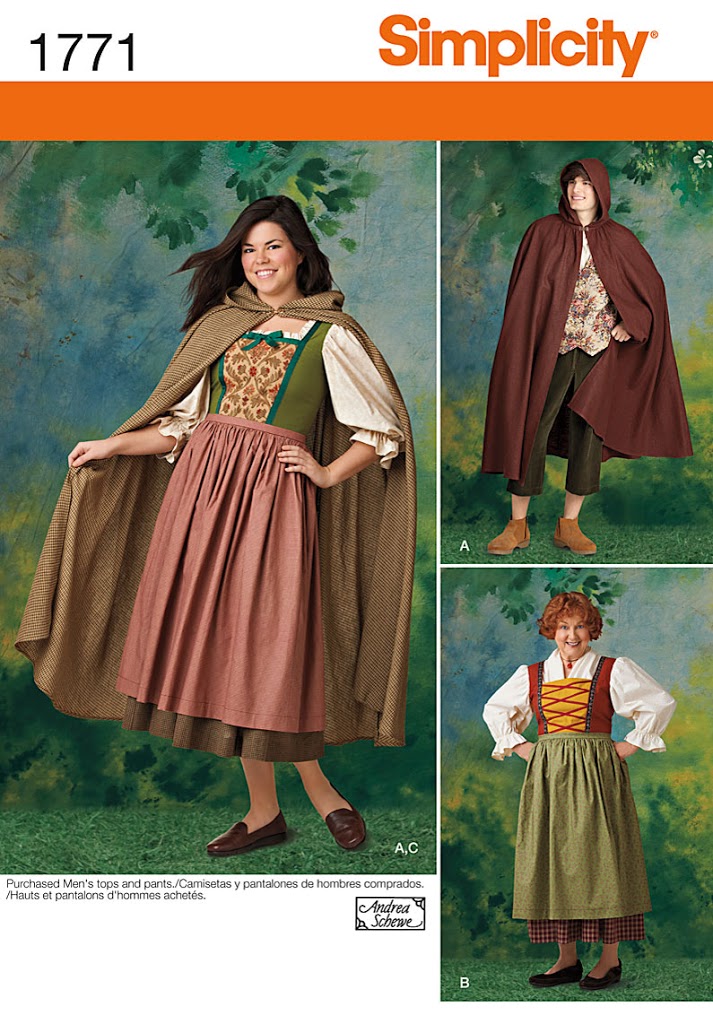
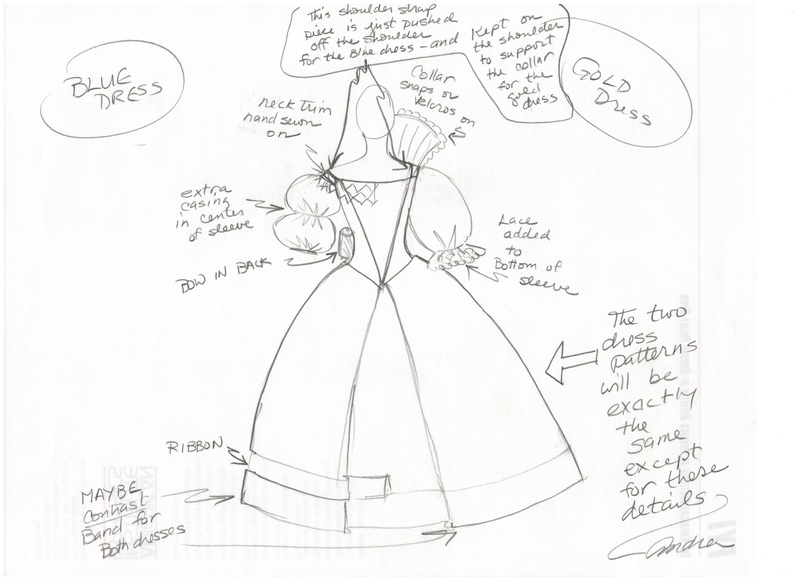
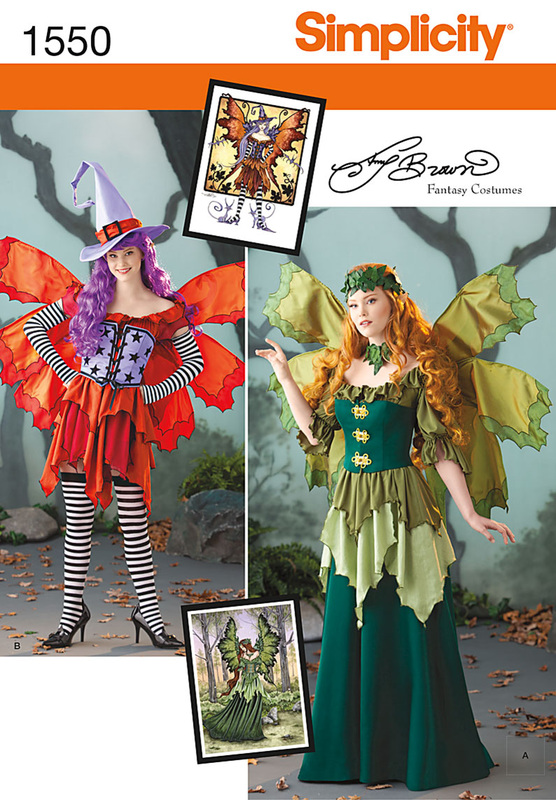
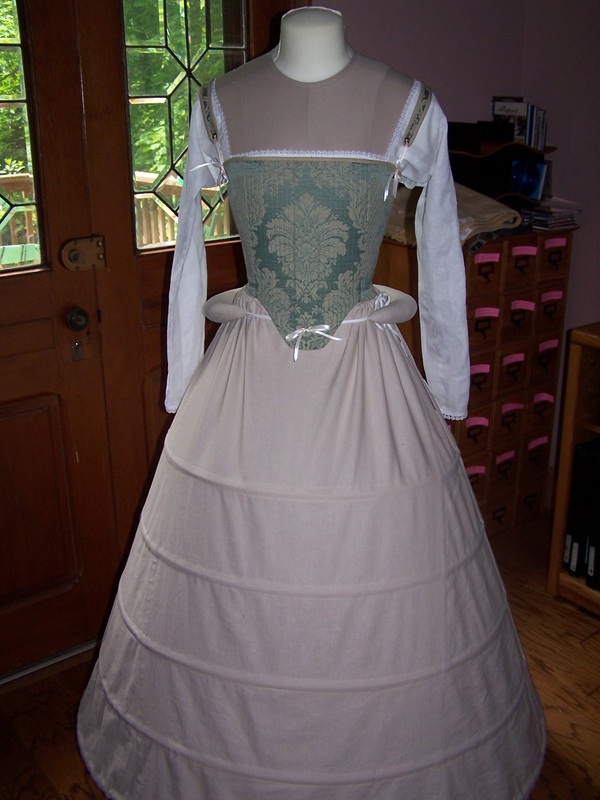
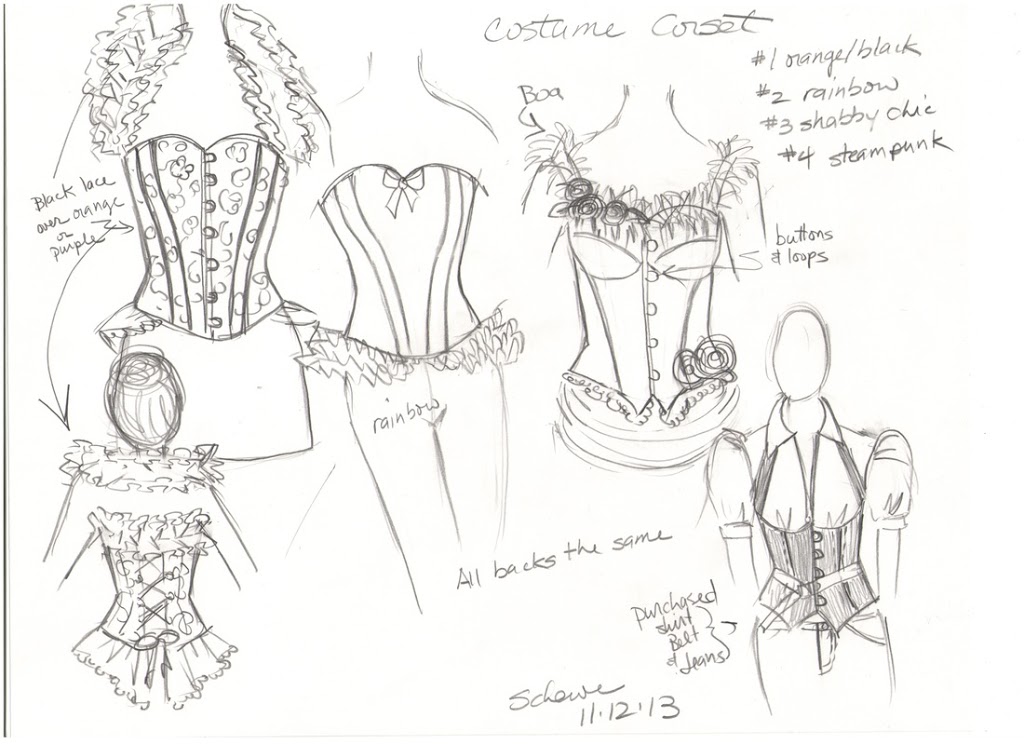
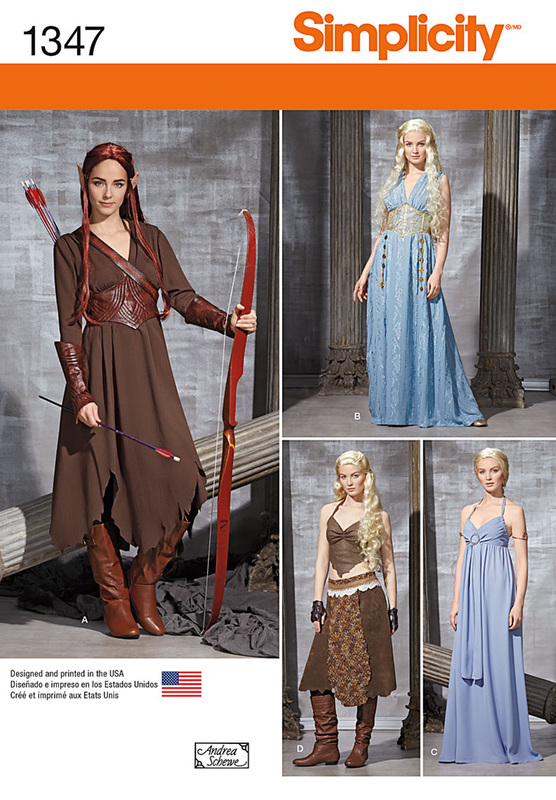


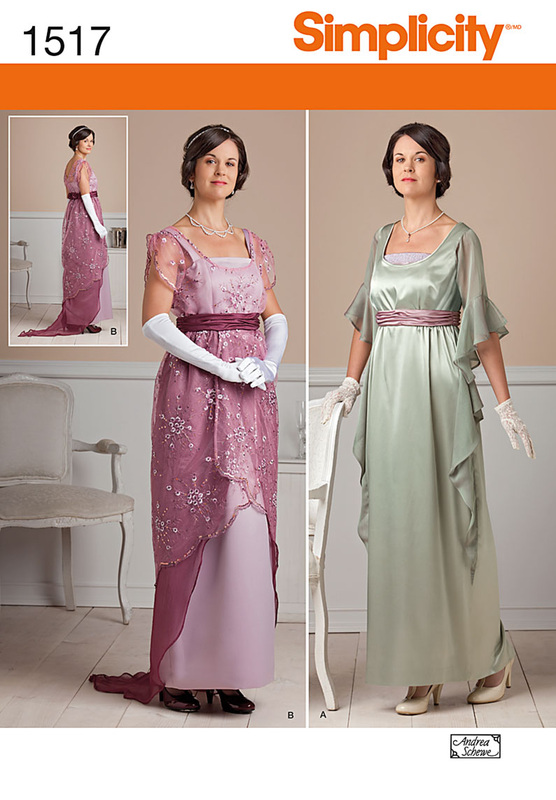
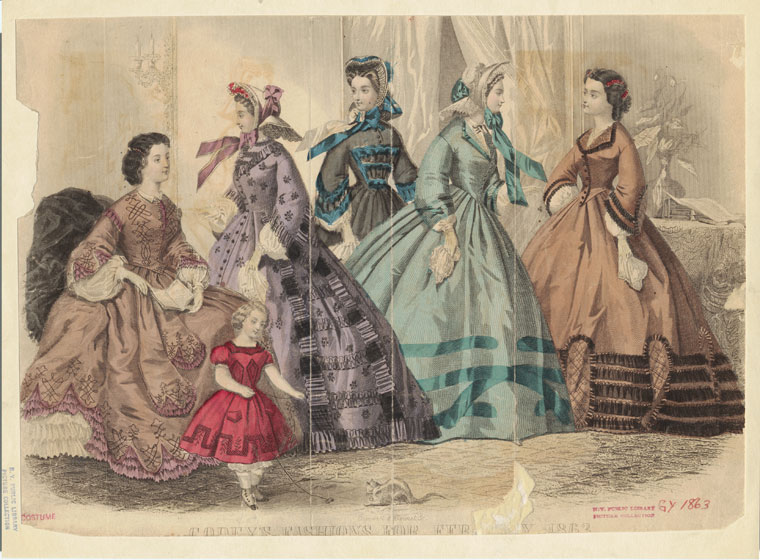
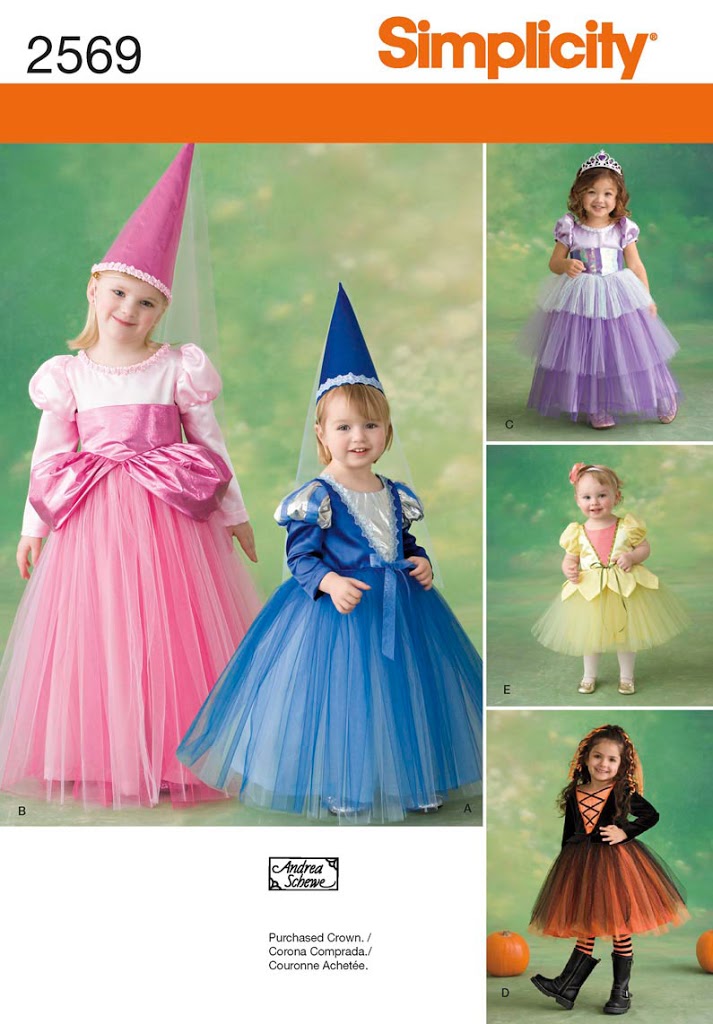
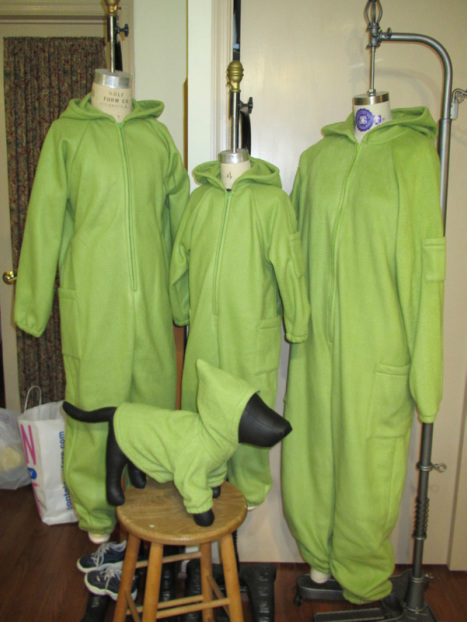
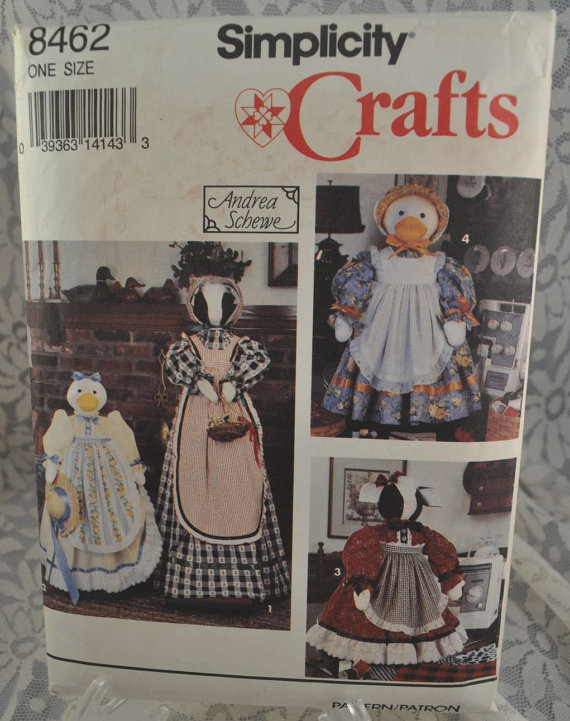
I love this post. I think it’s perfect and very informative. I studied historic costume so I had always wondered how one thing turned into the other.
Great interview! I loved hearing about Andrea’s process and learning more about how patterns get made. I wouldn’t have thought that a pattern-maker for a large company also sews the samples!
Such a good post! Thanks to you both for doing it!
This was super fascinating! Andrea’s blog is solid gold, thank you for bringing her to my attention!
Wow – the lime green onesies that had the fabric photoshopped on for the envelope! I had no idea.
Awesome interview, Dixie! I loved reading this and am now off to Andrea’s blog…
Thanks! I read somewhere on her blog that sometimes Simplicity changes parts of a design after she sends in the samples and some one there alters it. I I think that Cersi/Game of Thrones dress had it’s skirt altered because it would have required to many large pattern pieces.
Lol, those onesies look pretty ridiculous with the photoshopped prints on them but they look like weird alien costumes in that lime green! I don’t know which version is more hilarious!
What a fantastic post Dixie! I’ve used some of Andrea’s patterns in my community theater costume design job! I’m excited to know about her blog! What an impressive background she has.
So fascinating. Going to check out her blog now!
Super interesting post! And those vacuum covers are incredible.
My neighborhood does something called “Trail of Frights” each Halloween, and our hope is to do evil Mario/Nintendo as our theme this year. I want to make a “dark” version of Princess Peach’s iconic dress, but it seems like sooooo muuuuuch woooork. But this post actually makes me feel pretty inspired to give it a shot!
Awesome interview Dixie! SO fascinating to read about her process.
What a fantastic interview! I’m definitely going to check out her blog. I want to sew a costume for myself now! I made my son a lion costume last Halloween (he’s 2). I’m hoping it fits again for this year, it was a lot of fun to sew, but quite a bit of work for the one hour he’s worn it so far. 🙂
Great interview! Thank you! I have a few of her patterns but want so many more – she’s a great designer. I’d like to make some of my costume patterns in everyday fabric to wear all the time but it’s not coming along very well…and I’m distracted by everything.
However, my best sewing memory is making my daughter a Dorothy dress when she was three because she was obsessed with the Wizard of Oz. She wore the dress all the time. I’m planning to clean it up really well and frame it for her.
Hey Dixie! I loved this – thank you for introducing her. It’s great to read about the pattern designers behind the scenes, and I already got lost on her blog. Now when is Victorian Dixie going to make a reappearance? I miss her extant diatribes ;).
Thanks Amy! Ugh, I’m in the middle of sewing a corset (my third version). It’s corded for support rather than boned so I have to sew yards of piping cord sandwiched between two layers of fabric. Needless to say it’s taking awhile… 🙁
Thanks! I loved the Wizard of Oz when I was a kid. I wish I could have had a Dorothy costume. I bet your daughter loved it!
Thanks Margo, Andrea just made a kid’s animal costume pattern that’s kind of like hooded footie pajamas. Something like that could double as a costume and fun lounge wear (which is nice cause the kid can wear it more than once a year!). I bet he looked adorable as a little lion tho!
Wow, those costumes are amazing! The problem with sewing one of these is that I’d want to be a Tolkien Elf or Hobbit every day, and people would think I was crazy. But they are so much fun!!! Maybe for just around the house…
what a fun interview! i’ll be checking out her blog, thanks for sharing!
I loved reading this interview. Its interesting that there is such an emphasis- even in the pattern making world- on selling girls pink princess stuff. For my part I try to steer my daughters toward more neutral costumes like a dog or cat and this year I think I have one daughter planning on a Veterinarian costume (using a kids scrubs pattern) and the other a cat costume. Thanks again for a great interview!
thanks! aww, the vet and cat costumes sound really cute! great idea on using the scrubs.
hey, there are people who wear steampunk costumes nearly everyday, what’s wrong with a hobbit!? 😉
“dark” princess peach would be amazing! you need to play the theme music whenever you open the door for trick-or-treaters! ooooh, now i need to think up a good costume for this year.
hey, i remember seeing some of those costumes you made via pattern review. very nice!
Yes, we are going to put together a playlist with scary music from the castles and whatnot!
It looks amazing, I am crazy about this blog and it works. Really its so good and i am very thankful to you. In very informative and useful for me. Thanks for share.
Digitize a Logo
What an interesting blog post. Thank you and I will visit her blog. 🙂
Cheers,
Lyric
And my goal is a complete wardrobe makeover to Regency, Edwardian, 1940s and 1950s on a daily basis. It’s turning out to be larger than life and I’m loving it. Also, I’m always looking for kindred spirits; folk who wear this for life versus as a “costume”.
Cheers,
Lyric
http://www.sewcroandquilt.wordpress.com
Waving frantically at Bobbi Piles! It is so encouraging to read your response here. I too am working on wearing vintage styles for everyday life. Like I mentioned above it is proving to be larger than life but it’s all good.
I do hope you keep your dream alive with it all. You can always pal about it with me. I’m on social media and have a blog journalizing the experience. http://www.sewcroandquilt.wordpress.com.
https://www.facebook.com/pages/Sew-Cro-Quilt/1475592126015948
It would be sew good having a vintage-style sewing bud.
Cheers,
Lyric
Hello Dixie! Thank you so much for this informative post! I do have a question: How did you get the 2.941% in percentage grading your pattern? What type of calculation did you do? Thank you ever so much!